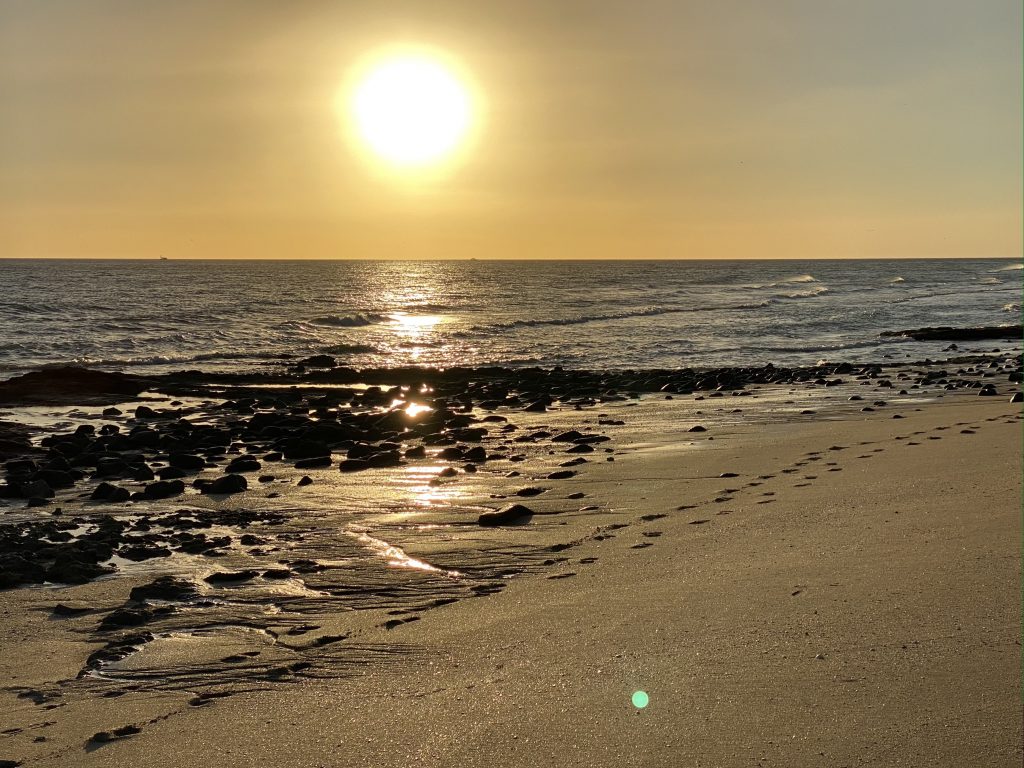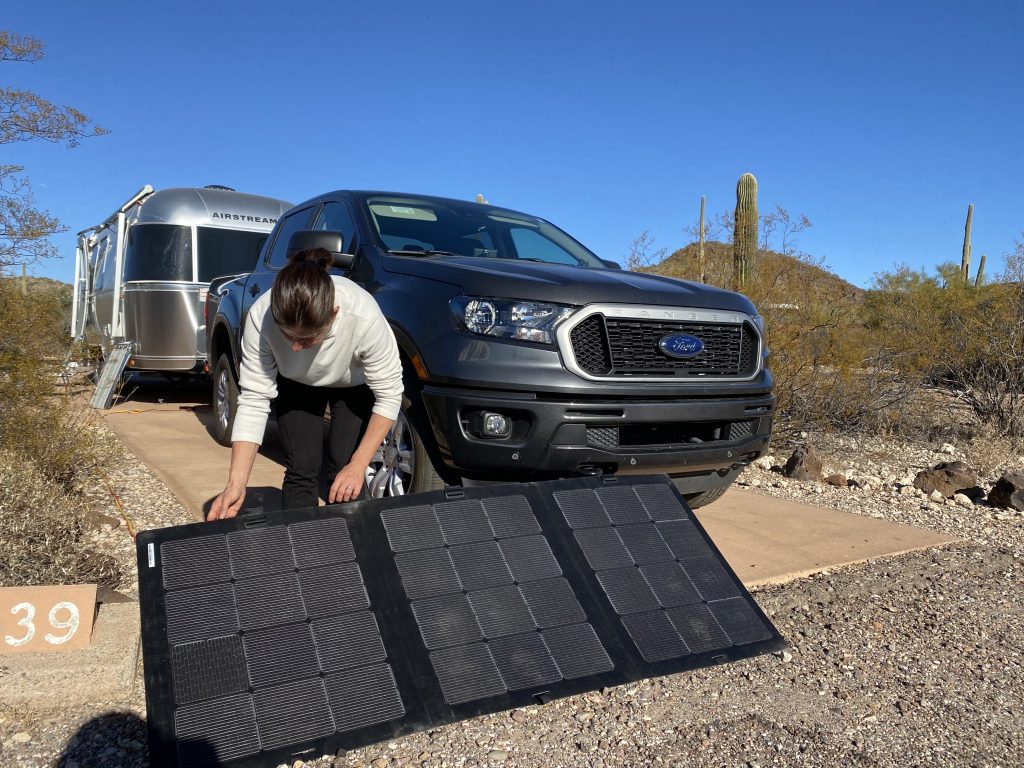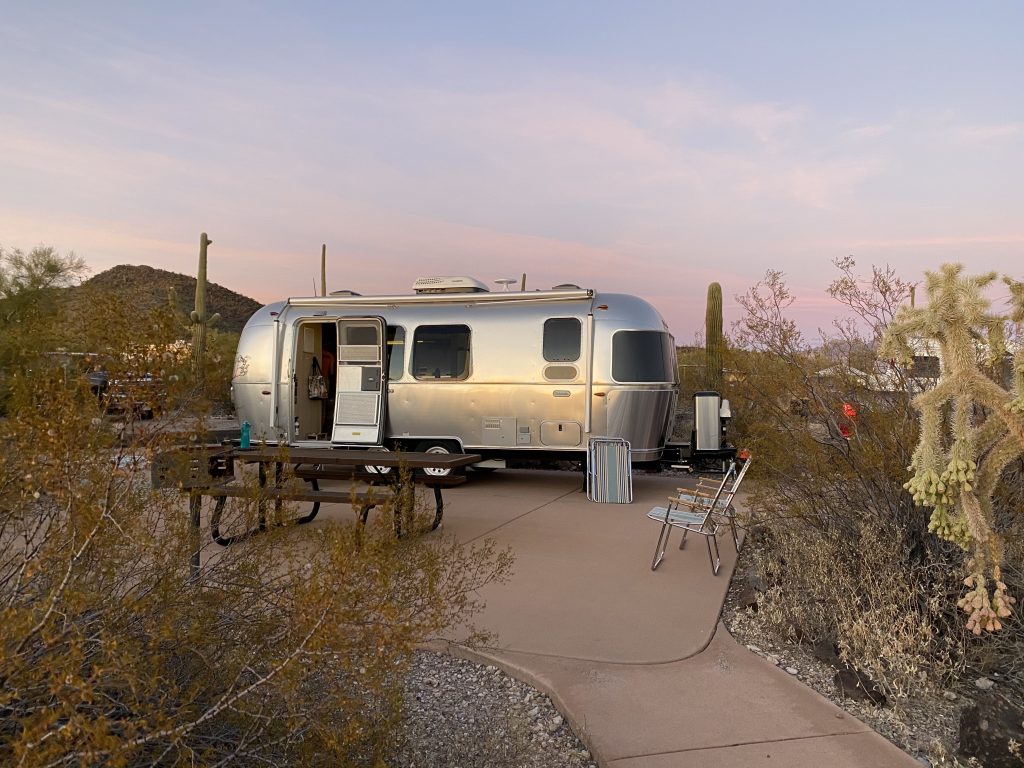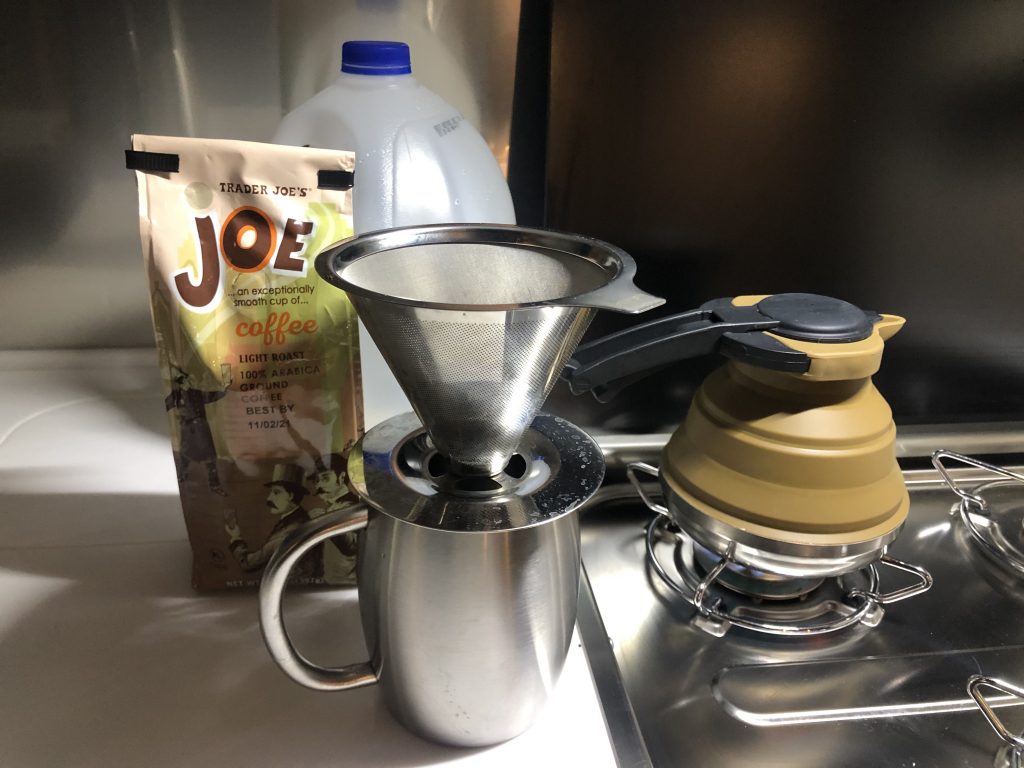If you’re an experienced Airstreamer, you may have already noticed that camping situations have changed—a lot—in the past year. It used to be optional to get reservations at a lot of campgrounds, but in these pandemic days campground availability has become a lot more scarce.
This makes it harder to go out on spontaneous weekend trips, and even trickier to roam the country. I used to just take off on cross-country trips without a single planned stop, and just find camping at the end of a driving day at any convenient place. This summer I expect it will be a different story.
But that’s OK. It just means a little more creativity, skill, and gear will be called for, and I always enjoy a good challenge.
The key is to go where other people aren’t—and that means being flexible about when and where you camp. This includes:
- courtesy parking (camping on other people’s driveways with permission, or on their land)
- boondocking (camping on open public land without hookups or services, like BLM land)
- unconventional campsites
- camping off-season or shoulder-season
I’ve written about all of those topics, so you can click the links if you want more information on any of them. In this blog, I want to talk about how you can prepare to be a flexible Airstreamer, ready to spend the night anywhere.
Airstreams come out of the factory ready for an overnight or two, with full self-containment features built-in. That means you’ve got the ability to carry all the essentials, namely a fridge full of food, fresh water in the holding tank, two cylinders of propane, and a boxful of electrons. You should always leave home loaded up and ready (and don’t skimp on the water because some campfire expert told you you’d save on gas if you emptied the water tank—it’s not true). This way you can be ready for anything the road might throw at you, such as a breakdown, unexpected delay, or an inexplicable spontaneous desire to sleep at a Wal-Mart.

Although Airstream gave you the basics, there’s a lot you can do to improve your boondocking capabilities, and there’s definitely some gear you should consider carrying. Here’s my top tips on ways to prepare for a few nights of complete independence from campgrounds, the power grid, and campground reservations.
1. Learn to conserve
The key to successful boondocking is stretching your on-board resources as far as possible. You can use less propane and electricity by having a few warm blankets on the bed at night. You can cut electrical use by using a phone or tablet instead of a laptop. Learning how to shower efficiently saves a tremendous amount of water. The strategies available are nearly endless. It just takes a willingness to learn a few techniques and perhaps invest in a bit of gear.
2. Increase capacities
Do you really need to use your laptop for hours? Does it take a lot of water to rinse the shampoo out of your hair? Well, you can always find ways to add more capacity. Usually in an Airstream it’s a matter of installing bigger battery banks (a custom job best done at an RV or solar specialty shop). For water, it’s a simple matter to buy a couple of 5 gallon jerry cans made for fresh water, and keep those in the truck bed.
3. Have a long reach
If you’ve been forced away from hookups for a while and then see the opportunity to dump tanks, plug into power, or put some fresh water in your tank, you don’t want to get skunked just because they’re out of reach. Carry extensions for everything: water hose, power cord, sewer.
I recommend having at least 100 feet of electric cord, 20 feet of sewer hose, and 50 feet of water hose. This is one of the reasons I love the Ultimate Water Hose—I can carry a lot of hose without a lot of weight and it fits in a small space.
I’d also recommend getting one of those replacement sewer caps that has a garden hose fitting built onto it. You can bring a garden hose that you use only for this purpose and this will allow you to dump gray water (never black water) in approved areas.
4. Have the apps
When you need propane, a sewer dump, or a place to spend a night whenever everything is booked, apps like Campendium, and AllStays Camp & RV are lifesavers. Put them on your phone or tablet and practice using them in advance. When you’re on the road and freaking out (a little) about finding a place to stay, it’s great to just flip through the apps and find a solution in a few minutes.
 5. Get at least a little solar capacity
5. Get at least a little solar capacity
Often in an impromptu camping situation like a casino parking lot or a Wal-Mart, you can’t run a generator. It’s the kind of behavior that gives RVers a bad reputation, and might get you kicked out. This is one of the many reasons that solar panels are so useful for serious travelers.
Even a smallish set of solar panels can be lifesavers. Flat batteries just plain suck. When the voltage drops too much, you’ll lose everything—even things that run on propane like the refrigerator, furnace, and water heater. It’s nice to have a backup.
 6. Go analog
6. Go analog
Anyone over the age of 40 remembers that the world was once primarily analog, and we had plenty of fun even back in those Stone Ages. Digital gear is great but it all takes power and too much of it is connected to the Internet. At the risk of seeming to be a Luddite (which I definitely am not) let me recommend bringing some analog experiences with you.
For example, a paper book. Throw a few books in the Airstream just for “emergency use”. There will be a day when you have to cool your heels for some unexpected reason, and that’s your chance to lay back on the bed and read. Pick something you’ll really enjoy, even if it’s embarrassing like a graphic novel or trashy romance. It’s your Airstream, you get to decide how to entertain yourself.
Or how about binoculars? Whether you’re a birder, leaf peeper, or just a peeper, a nice set of optics can be quite entertaining both day and night.
Board games? Playing cards? Sketchbook? Puzzles? Ukulele? Anything goes!
If you’re comfortable with winging it as needed, you don’t need to fear the crowds. Just get the gear you need, move out of the popular ruts, and you’ll discover a host of new experiences that probably will enhance your love of Airstream travel in the long run. As a bonus, you’ll also make your Airstream more useful if you have to “bug out” in the event of a natural disaster. Your Airstream is made to go almost anywhere and keep you comfortable. Why not take full advantage of it?
 The other day I heard about an educational seminar on the topic of solar power for Airstreams and decided to take a look. What I saw horrified me: the presenter turned this simple topic into an engineering class that would intimidate all but the geekiest among us. Imagine densely-packed slides full of numbers and technical terms.
The other day I heard about an educational seminar on the topic of solar power for Airstreams and decided to take a look. What I saw horrified me: the presenter turned this simple topic into an engineering class that would intimidate all but the geekiest among us. Imagine densely-packed slides full of numbers and technical terms. “Should I get solar or a generator?”
“Should I get solar or a generator?” Our unhooked campsite at
Our unhooked campsite at  Mickey loved the Airstream bedroom sunrises.
Mickey loved the Airstream bedroom sunrises. The aroma is amazing when you use a pour-over funnel to make your morning coffee.
The aroma is amazing when you use a pour-over funnel to make your morning coffee. 
